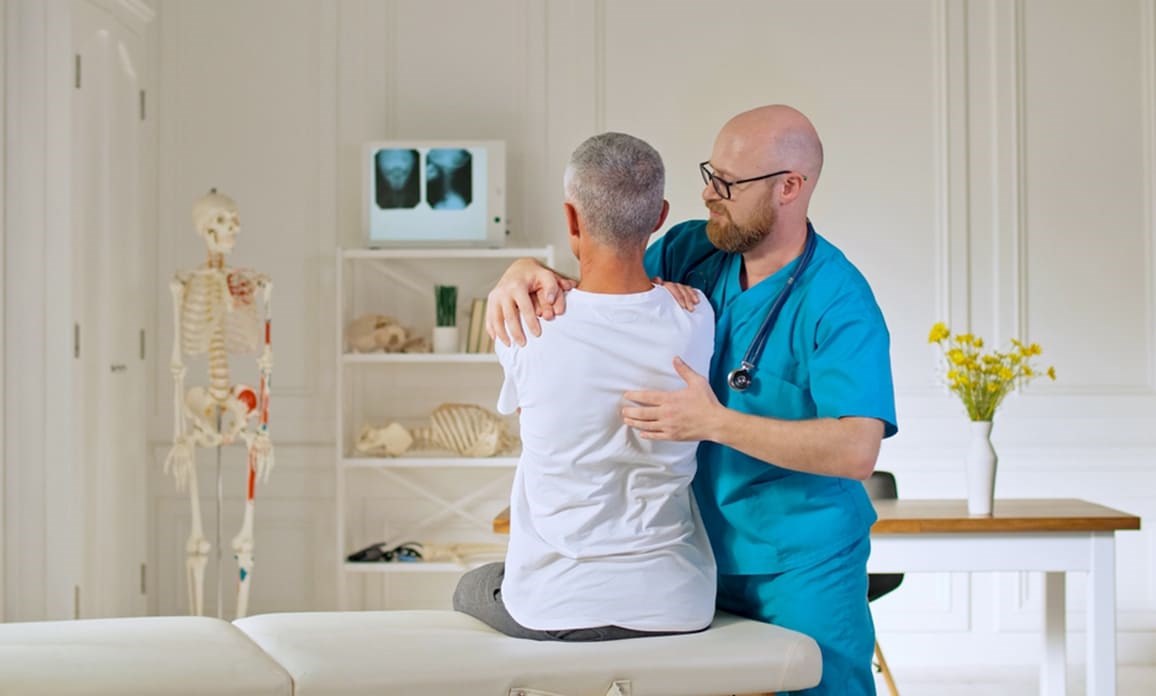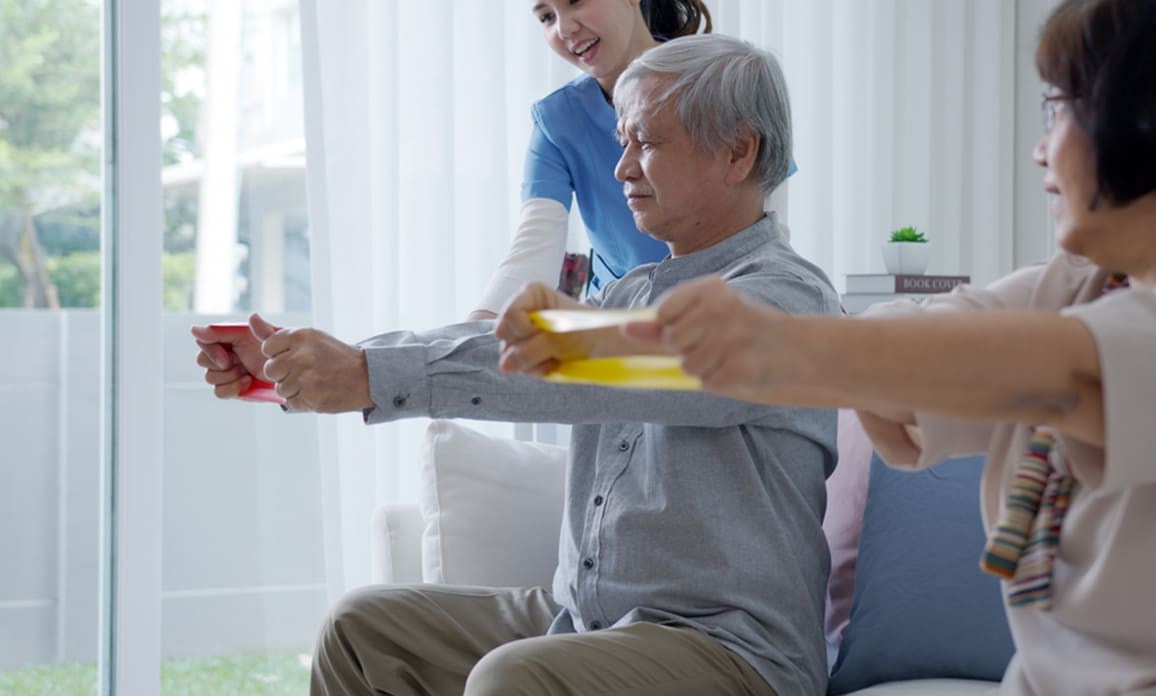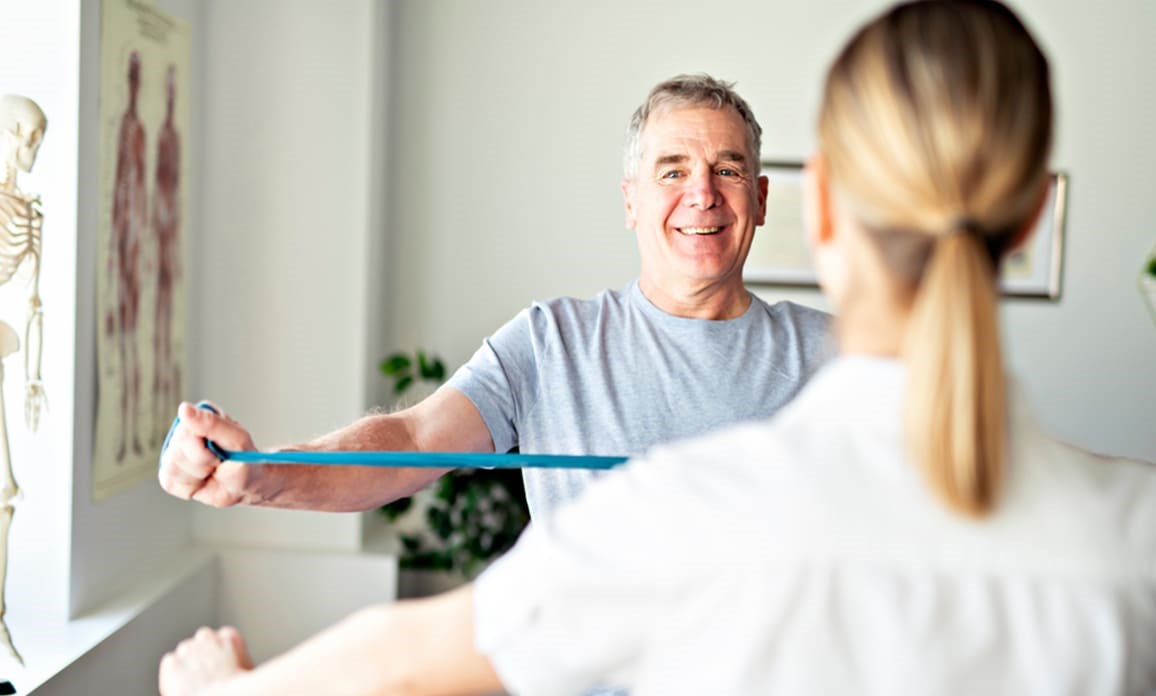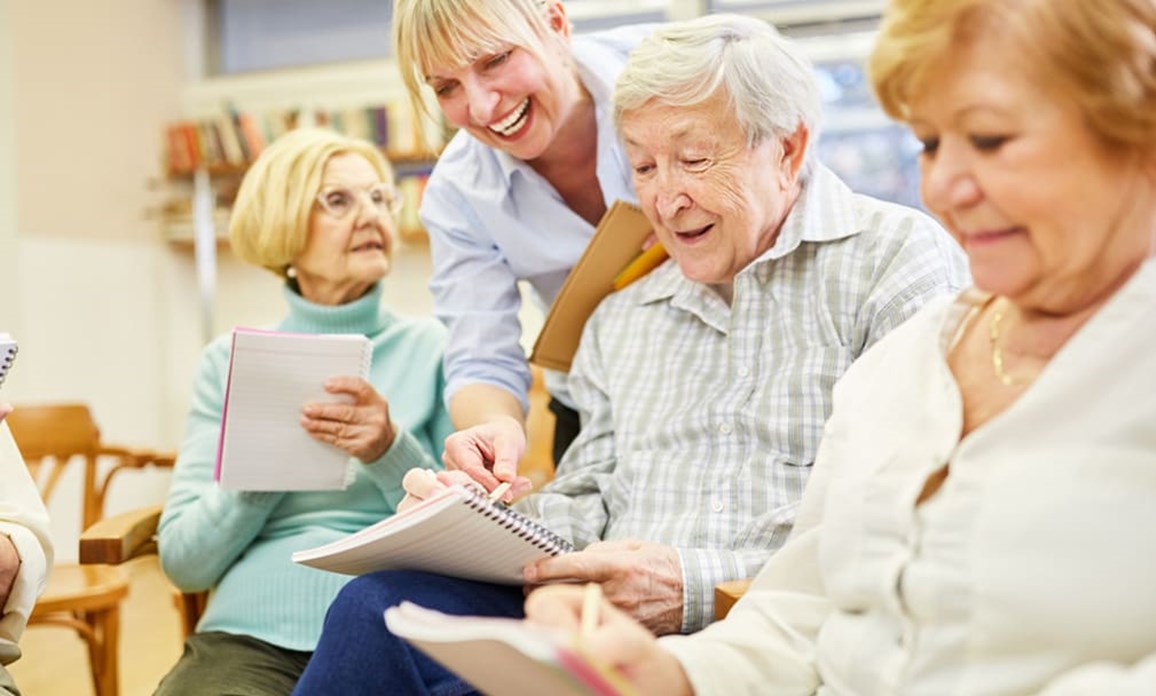The Role of Physical Therapy in Treating Parkinson’s Disease
Parkinson’s Disease (PD) is a neurodegenerative disease with a well-known progression: even with the best medical care, patients’ brain functions will deteriorate over time. The aim of all therapies – both medical and non-medical – is to offer patients the best quality of life possible for as long as possible. Alongside treatment with medication and other options, physical therapy plays a crucial role in allowing patients to enjoy life as they learn to manage their PD.
Physical therapy focuses on a person’s musculoskeletal system: their muscles, joints, bones, and connective tissue. Through a series of physical exercises, lifestyle adjustments, and mental practice, people living with PD can regain their physical strength, improve stability, increase mobility, and avoid injuries. A physical therapist who specializes in treating people with PD can tailor a program to the unique needs and preferences of each client.
The physical therapist is probably the single health care professional who spends the most time with a Parkinson’s patient. People living with PD may see their neurologist once every few weeks or months, and talk to their Parkinson’s clinic nurse once a week; yet they meet with their physical therapist for multiple sessions each week. This puts the physical therapist in a unique position as they observe not only a patient’s physical condition, but also their mental state, mood, living environment, and relationships. A physical therapist can therefore coach a patient and their family members on ways to improve many aspects affecting their quality of life – from everyday habits to interacting with others.
In this article I will review ways in which physical therapy can have a positive effect on people living with Parkinson’s. While the methods described here have proven to be successful for my clients, each person is different, and a treatment program should be tailored to the specific needs of every person living with PD.

Addressing Home Adjustments …. The right home environment and the right attitude are critical for maintaining a healthy and active lifestyle
Physical therapy programs are often intensive, involving multiple sessions per week; yet patients still spend most of their time at home, away from the clinic or office, where they have an opportunity to continue working towards a healthier, more independent lifestyle.
I first met Kevin after he had quickly deteriorated from being very active to a point where he could barely take care of himself. Seeing him struggle, his well-wishing family members had tried to accommodate him by simplifying everyday activities for him. For example, rather than getting up himself to get a drink of water from the kitchen, they would go get it for him. Yet this is an opportunity to encourage a patient’s everyday activity: forcing them to get up on their own to get a glass of water helps to maintain their mobility and independence, as well as confidence. I had to explain to them that by trying to make things easier for him, they were actually encouraging him to be less active.
Setting up a home environment (and an attitude) that promotes everyday mobility and independence is an important part of a person’s treatment. Physical therapy sessions at the clinic, as frequent as they may be, are not enough; exercising at home, adjusting the home environment to promote mobility, and changing family members’ mindset toward greater independence for the patient have a cumulative effect on quality of life. With rigorous sessions at the clinic, home exercises, and adjustments to his living environment, as well as his family’s support, Kevin was able to regain his independence. He now enjoys going out to the local café with his friends without any assistance.
Addressing Social Participation …. Interacting with others is the essence of life
Human beings are social creatures. Social participation – our everyday engagement with our social environment – is, for many people, the essence of life. Yet people living with PD tend to withdraw from social activities. Their mood is often affected, they struggle with the physical effort involved in getting dressed or getting out of the house, they tend to feel tired or sleepy, and these challenges may cause them to withdraw from human interaction. This, in turn, may worsen their physical condition as they become less physically active, leading to a downward spiral where physical atrophy and social isolation feed into each other.
Jessica came to see me about six years after her Parkinson’s diagnosis, yet her motivation for reaching out wasn’t her PD – it was back pain due to a recent car accident. She had generally avoided treating her PD, taking very few medications, and not doing much else to manage the changes brought on by her condition. Her family had described her as having become generally disengaged and inactive, yet she took on her physical therapy program with newly found vigor. When her back pain improved, we slowly transitioned toward targeting her strength and mobility. A few months later, at her daughter’s wedding, her family and friends were thrilled to see her get up and dance to her favorite song.
When patients improve their physical strength, flexibility, and stability, they feel more capable of getting out of the house, interacting with others, and engaging once again in their favorite social activities. In the moment, physical activity may seem technical – improving the strength of a specific muscle or repeating an exercise over and over again – yet its ultimate goal is to allow patients to enjoy life again, especially by participating in social activities.

Addressing Freezing … Sometimes taking the first step is the hardest thing of all
Freezing is a common symptom of PD. Even if a patient doesn’t struggle particularly with walking, they may find that starting to walk – taking the first step – becomes more and more difficult. This is especially troublesome when a person has a short amount of time to start moving, such as when stepping out of an elevator before the doors close or getting off a train; this, in turn, may trigger anxiety as people dread the prospect of not being able to start walking when they need to, further exacerbating freezing.
Jacob, a client of mine in his 40’s with rapidly progressing PD, had found a solution to freezing: he maintained a fast walking pace, hoping that this way he might avoid freezing and a potential fall. While he had thought that this strategy worked for him, it was neither optimal nor safe. Our focus was on slowing down his movements, improving his stability and flexibility, while also ensuring that his strength was balanced throughout his body. As his confidence in his stability and slow movements grew, he took up an old hobby – skateboarding at a local skate park!

The strategies used to address freezing showcase how different people are from one another. Many people with PD find cues helpful in taking the first step forward, yet the variety of cues used by patients is endless. Some use visual cues, trying to step over a visual line, such as the elevator threshold. Others use an auditory cue – counting “one, two, three” either out loud or to themselves. Tactile cues are also used – a patient may have someone pat their back as a sign that they need to start walking. Once they have found a solution that works for them, the risk of falls due to freezing is reduced, as is the associated anxiety.
Tailored Program, Hard Work
Finding what works for you, making changes at home and in your daily routine, and involving your family in the process are all important in ensuring that you see the benefits of physical therapy. Yet one aspect surpasses all others in its contribution to an improved quality of life – your dedication and hard work. People who come down with the flu can take it easy for a week and get better; with Parkinson’s, if you take it easy for a week, you will most likely get worse. Repeated exercise, both at the physical therapist’s office and at home, will keep you on the right track toward improving your strength and mobility so that you can keep enjoying the activities and relationships that matter to you.
THIS ARTICLE DOES NOT PROVIDE MEDICAL ADVICE and is not a substitute for professional medical advice, diagnosis or treatment. If you or any other person has a medical concern, you should consult with your health care provider or seek other professional medical treatment immediately. Never disregard professional medical advice or delay in seeking it because of something that you have read on this website or in any linked article, blog or other materials.








